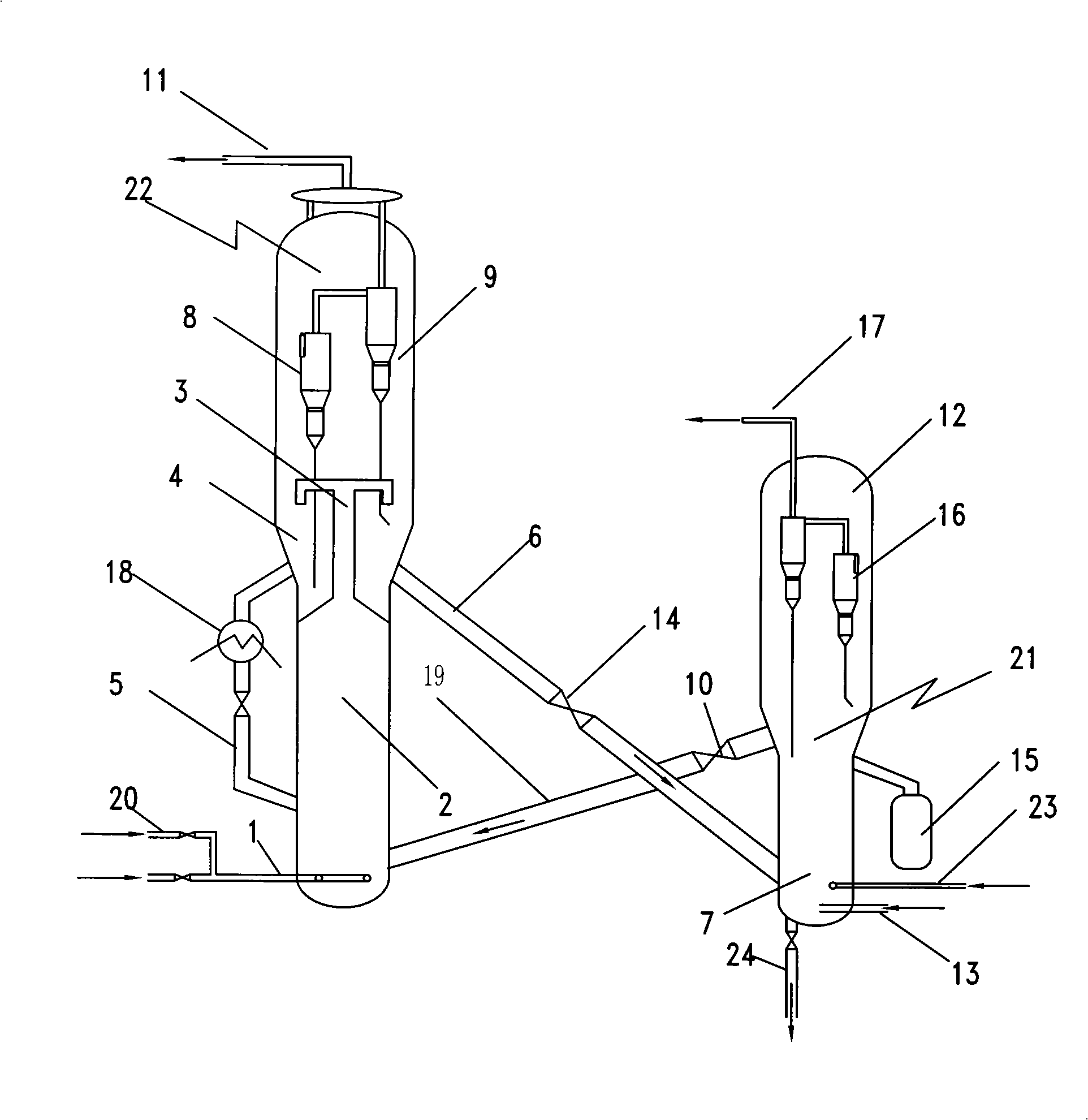Method for reducing catalyst contamination in reaction for preparing light olefins from methanol
A low-carbon olefin and catalyst technology, applied in molecular sieve catalysts, chemical instruments and methods, physical/chemical process catalysts, etc., can solve problems such as catalyst pollution, and achieve short contact time, reduced dosage, and high yield of low-carbon olefins. Effect
- Summary
- Abstract
- Description
- Claims
- Application Information
AI Technical Summary
Problems solved by technology
Method used
Image
Examples
Embodiment 1
[0017] Such as figure 1 In the methanol-to-olefins reaction-regeneration system shown, the reactor is a fast bed, the regenerator is a bubbling bed, the catalyst is SAPO-34 molecular sieve, the feed rate of methanol is 4 tons / hour, and fuel gas is fed into the auxiliary combustion chamber for ignition. The regeneration medium is heated, and the regeneration medium enters the regenerator after being heated, and the regenerator is heated to about 350°C. The catalyst is loaded into the circulating fluidized bed reaction regeneration device through a large dosing line, and the reaction zone is heated to 275°C through the circulation of the catalyst; the regeneration slide valve and the standby slide valve of the catalyst circulation inclined pipe are closed, and then methanol is passed into the The reactor is in contact with the catalyst, and coke is formed on the catalyst. After leaving the reaction zone of the reactor, the molecular sieve catalyst with coke does not enter the re...
PUM
 Login to View More
Login to View More Abstract
Description
Claims
Application Information
 Login to View More
Login to View More - R&D
- Intellectual Property
- Life Sciences
- Materials
- Tech Scout
- Unparalleled Data Quality
- Higher Quality Content
- 60% Fewer Hallucinations
Browse by: Latest US Patents, China's latest patents, Technical Efficacy Thesaurus, Application Domain, Technology Topic, Popular Technical Reports.
© 2025 PatSnap. All rights reserved.Legal|Privacy policy|Modern Slavery Act Transparency Statement|Sitemap|About US| Contact US: help@patsnap.com

